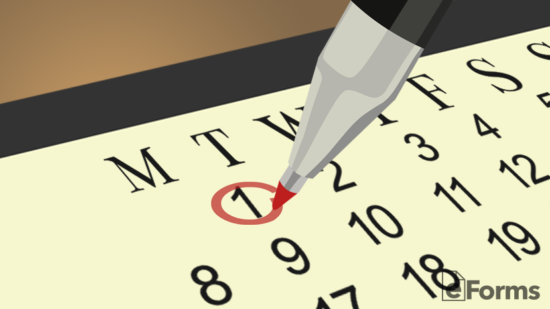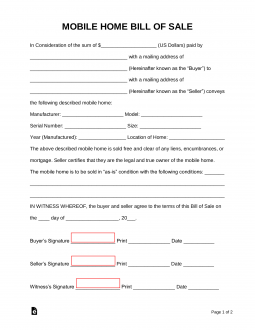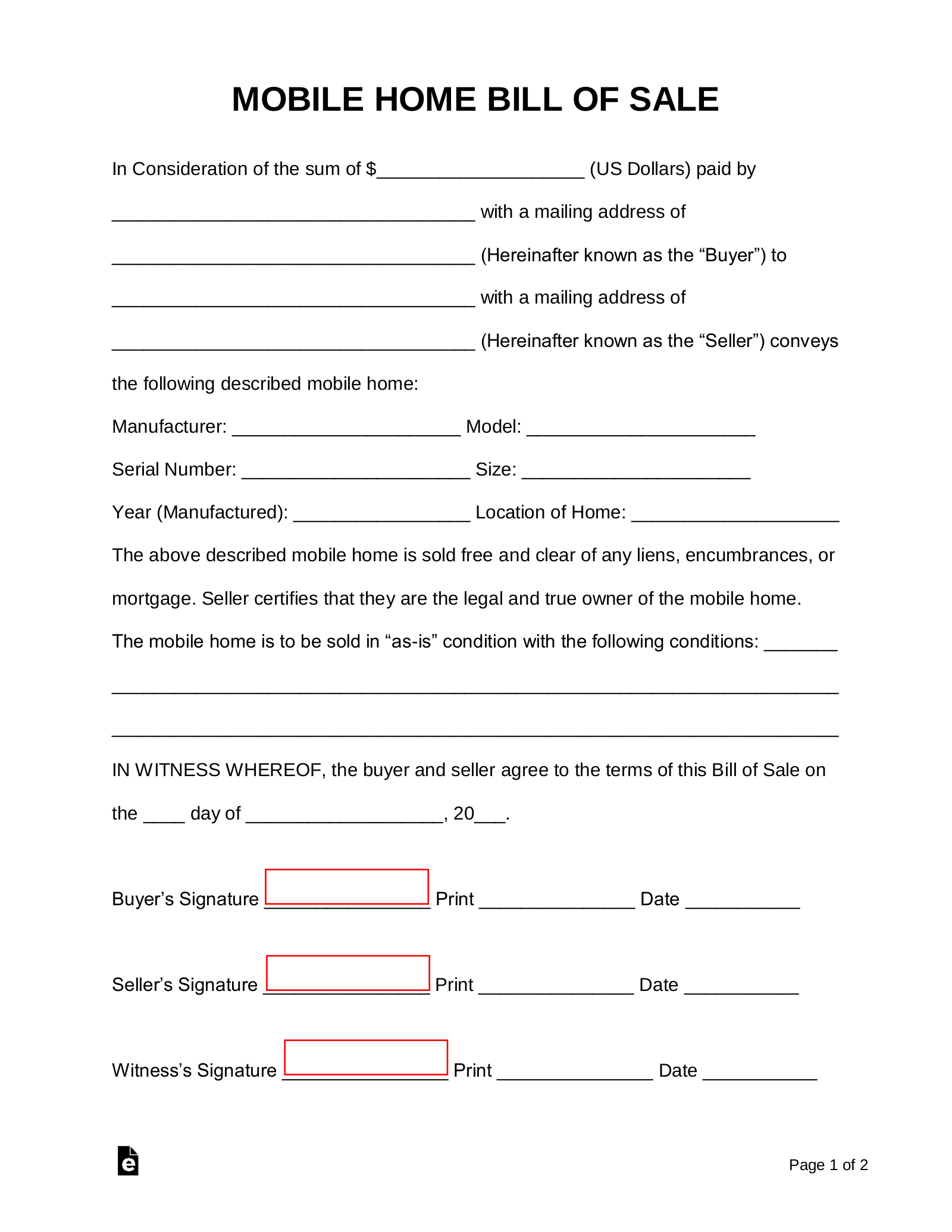Updated May 08, 2024
A mobile home bill of sale is used to prove the legal sale and purchase of a mobile home between a buyer and seller. The bill of sale outlines all the agreed-upon terms of the sale, including purchase price, closing date, and more. Once the transaction is completed, it’s recommended that a notary public witness the signing of the document.
How to Use a Mobile Home Bill of Sale (5 steps)
- Negotiate the Terms
- Inspect the Property
- Agree to a Closing Date
- Sign the Mobile Home Bill of Sale
- Register the Mobile Home
1. Negotiate the Terms

The buyer and seller must first discuss the terms of the sale, including a purchase price for the mobile home. Typically, the purchase price is determined by the model of the mobile home (e.g. single wide, double wide, triple wide, etc.) and whether land is included in the sale. If land is included, it is recommended to use a Residential Purchase Agreement instead.
Use JDPower.com to get an estimate of how much the manufactured home is worth. After entering the manufacturer, model, and size of the property, an estimated value will be displayed. It is also advised to look up what similar homes are selling for in your area with websites like Zillow.com and Craigslist.org.
2. Inspect the Property

In most cases, the buyer will require that the sale of the home is contingent upon it passing an inspection by a certified inspector. Most reports should only take about 48 hours from the time the inspection takes place. It typically covers the foundation, plumbing, electrical, roof (leaks), siding, heating systems, hot water tank, and any other structural features of the home.
3. Agree to a Closing Date

Once the final purchase price is agreed upon by both parties, a closing date should take place. At the closing, the seller will transfer possession of the mobile home by vacating and moving out their personal possessions.
Seller’s Responsibilities – Required to bring all documentation, including but not limited to the title, registration, past inspection reports, past repair invoices, lien release(s), and any other certificates that would be helpful or needed for the buyer to register the home in their state.
Buyer’s Responsibilities – Required to bring the funds for the closing in either cash, certified check, money order, or a standard personal check.
5. Register the Mobile Home

After all the documents are signed, the buyer will need to go to the Department of Motor Vehicles (DMV) or equivalent office and register the mobile home. If the home did not come with land, it will be treated like any other transferrable or removable asset, which is covered by the buyer’s local DMV office.
In most cases, the buyer will need to bring the title, current/past registration, proof of insurance, mobile home bill of sale, and government-issued identification.
Depending on the state, there will also be registration fees based on the value of the mobile home in addition to a sales tax.



